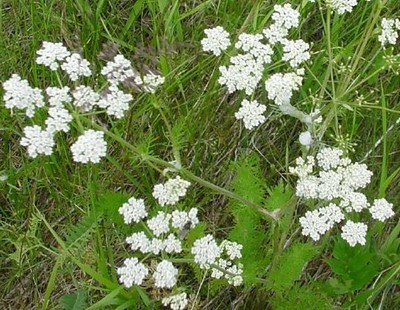
Common Name: Shveta jiraka
English Name: Cumin
Botanical Name: Cuminum cyminum Linn.
Family: Umbelliferae, Apiaceae
Description: C. cyminum is an annual herbaceous plant which grows upto 15-50 cm height somewhat angular and tends to droop under its own weight. It has a long, white root. The leaves are 5-10 cm long, pinnate or bi pinnate, with thread-like leaflets and blue green in color and are finely divided generally turned back at the ends. The leaves are highly dissected. Whitish-red flowers are on a compound umbel(arrangement of flowers looks like an umbrella). The fruits are similar to fennel seeds, when chewed has bitter and pungent taste. The fruit are thicker in the middle, compressed laterally about 5 inch long, containing a single seed.
Chemical Constituents: 2.5 to 4.5% volatile oil, 10% fixed oil and proteins, volatile oil mainly consists of 30 to 50% cuminaldehyde, small quantities of a-pinene, b-pinene, phellandrene, cuminic alcohol, hydrated cuminaldehyde and hydrocuminine which make it suitable for medicinal purpose.
Properties: The therapeutic properties of cumin oil are antiseptic, anti-spasmodic, bactericidal, carminative, digestive, diuretic, stimulant and tonic.
Used in the following MATXIN product: